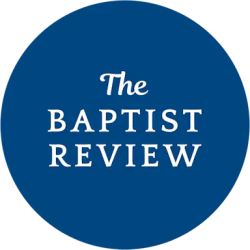"I will go down if you hold the ropes."
Every good Baptist preacher is familiar with that phrase uttered by William Carey to Andrew Fuller. These famous words demonstrate that for everyone willing to go for the gospel's sake, there also needs to be someone to support them. Thankfully, Baptists of all persuasions quickly stepped up to "hold the ropes" for the burgeoning mission movement and those who went like Carey.
Following the model of Carey's Baptist Mission Society of England, mission societies spring up all over the young United States to support the work overseas. Even as Baptists began to work together, like through the Triennial Convention, the societal method of giving continued. The society method led to division and inefficiency in the work, however. Brand and Allen record that "Among American Baptists, in the years from 1802 to 1919, there were at least eleven different general foreign mission societies and twenty-two more which women's groups conducted. With the establishment of the Southern Baptist Convention in 1845, an attempt was made to "bring the society method of funding into an associational method of organization." Still, progress was hard to come by, as the new SBC did much good work but needed to be more efficient on many levels.
The Failures of the Society Giving Model
Through most of the first 75 years of the Southern Baptist Convention, societal giving was the central way money was raised for all their projects. The main difference was that the "societies" were the Boards and Entities of the Convention. Each employed "agents" to help raise funds for their cause, and churches gave directly to the entities as they saw fit. This still needed improvement, though, as agents were allowed to keep 20 percent of what they collected, and sometimes that number was even higher. In 1876, the Home Mission Board collected over $19,000, but 44% of that was spent on administration, of which the most significant part went to pay the fundraising agents. A person gifted in this area of fundraising could accomplish a lot, as in the case of George W Truett, who traveled extensively to raise money for Baylor before he was even a student there. His remarkable gifts and tireless work ethic led to him raising $90,000, an astronomical sum at the turn of the century, in only two years.
Lots of good work was done in those days, but the giving was inconsistent, making it hard for leaders to plan for the coming years. It was not unusual for a large church to have several different fundraisers from different entities show up on the same day, and often, the one who was the best speaker got the most money. In contrast, the smaller and out-of-the-way churches would only see a visit from an agency representative once or twice a year. Fundraisers were subject to the whims of who was at church that day, the weather, and other events. Churches might go for several years without contributing to the Convention's mission work at all, and each SBC entity had to deal with inconsistent income and support from the churches.
As the 1920s roared across the United States, the still-young SBC faced a growing problem. There was a severe threat of financial collapse and the ending of three seminaries, two mission agencies, a Sunday school board, and countless other state and local associations.
The threat of financial collapse was so real that the Convention's highest leaders scrambled to find a solution. Truett, who knew how much one man could accomplish in fundraising, saw the need for a more cooperative solution among churches. As the head of the 75 Million Campaign, Truett pushed for SBC churches to work together in pledging funds to support the mission work. Ultimately, that plan took in less than was promised and even less than the goal, leaving the entities with more debt.
The Cooperative Program Takes Root
There was still a push for more cooperative funding, so at the 1925 SBC Annual Meeting, the messengers approved the "Cooperative Program," an attempt to provide a unified budget for the work of the Convention and its entities. It's worth noting that most people were not optimistic about the outcome of this new plan either. Many people left that meeting in Tennessee feeling like nothing had been accomplished. W. E. Grindstaff records the sentiments of three people who left that Convention in 1925 in his book "Our Cooperative Program."
- C. W. McElroy: "Happiness of former conventions was not on the face of delegates. This was due, perhaps, to the depressing effect of our huge debts."
- T. C. Skinner: "The Convention was the least satisfying of all I have attended in twenty-five years."
- Frank L. Hardy: "The Convention struck no high tide. We seemed to not be together."
Given the hindsight of history, we now know just how important that 1925 meeting was. In addition to adopting the first version of the Baptist Faith and Message as a shared confession, the Cooperative Program's approval laid the foundation for one of the greatest missionary emphases in history. But amid financial strife, fighting over evolutionism, doctrinal statements, and so much more, that giving program was an afterthought and was passed with little fanfare and little hope. But as churches and conventions became fully bought into the CP, it allowed the SBC to not only weather the coming Great Depression but emerge stronger on the other side.
Looking back, the effects of the new Cooperative Program and the church giving are easy to see:
- In 1928, the Home Mission Board had a debt of $2,527,453, including the nearly $1 million embezzlement by C. S. Carnes, and made a subsequent appeal to the EC for financial assistance. By 1943, even amid the great depression, they could celebrate being debt-free for the first time in 25 years.
- The total debt of all SBC agencies peaked at $6.5 million, but the steady giving of churches quickly eliminated that debt by the 1940's.
- With the ability to rely on a steady income, the entities could accurately plan for the future and focus on gospel growth, not fundraising. The SBC as a whole felt such confidence in the future that messengers approved the opening/adoption of 3 new seminaries and countless other ministries.
- By 1953, under the leadership of Charles Maddry and Theron Rankin, the Foreign Mission Board saw an 80 percent increase in the number of foreign missionaries and the expansion of work into 16 new countries.
Cooperation As a Team Effort
As the years rolled on, the financial plan of the Executive Committee and the allotments to entities began to take the shape we know today. In the early years, the plan took into account "designated and undesignated gifts" in their distribution. But over time, that was phased out, for as Albert McClellan put it, "a designated gift to one agency is not really a cooperative gift to all agencies. "
The SBC understood the Cooperative Program's power so much that they prohibited entities from raising funds or soliciting churches directly. As far back as 1945, the financial plan stated, "Any special financial campaign by an agency for budget needs, endowment, building, equipment, or other purposes, shall first receive the endorsement and approval of the Convention, or of its Executive Committee."
Those rules are still in effect today, with the 2023 Financial Plan going further, stating in Section VI that "In no case shall any Convention entity approach a church for inclusion in its church budget or appeal for financial contributions." All fundraising efforts must have the approval of the SBC. More than that, "...Each Convention entity shall report annually to the Executive Committee of the Southern Baptist Convention on any type of fundraising activity conducted by the entity."
Since the first adoption of the Cooperative Program, churches and messengers have continued to show their support for it. An easy way to see that is how churches have continued to give towards it. In 2021, Baptist Press reported that cumulative giving for the Cooperative Program topped $20 billion since it first began in 1925. In addition, at least eight resolutions directly express support for the CP, and countless others mention it as a critical component for missions, outreach, disaster relief, and the work of the SBC worldwide.
100 Years of CP
The journey of the Southern Baptist Convention from fragmented fundraising methods to the establishment of the Cooperative Program stands as a testament to the necessity of unity and strategic planning to keep our focus on missions and the spread of the gospel. The inefficiency and financial uncertainty of the early years made it clear to leaders that a different plan was needed. Despite the initial skepticism, adopting the Cooperative Program in 1925 became a pivotal moment in the history of Southern Baptists and changed their direction.
In the almost 100 years since it passed, the CP has allowed churches to work together to train thousands of pastors, send thousands of missionaries, engage in disaster relief, and do countless other works. The plan that allowed the SBC to overcome financial challenges, withstand the Great Depression, and emerge with strengthened missionary efforts is the same plan that will enable us to face the challenges in the future.
Simply put, the Cooperative Program works, and as we approach the dawn of the second century of the Cooperative Program, now is the time to restate our commitment to it. As the Southern Baptist Convention navigates the contemporary landscape, the continued commitment to the Cooperative Program remains essential for the SBC in fostering unity and focus as we work together to take the gospel to our neighbors and the nations.


